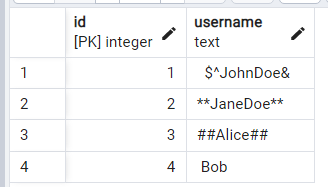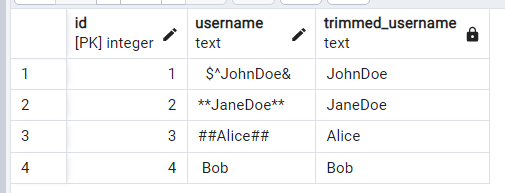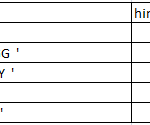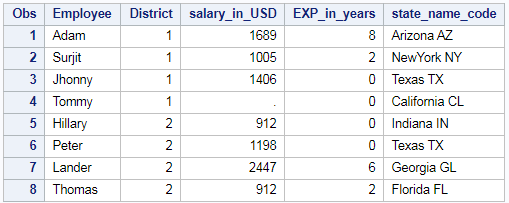The btrim() function in PostgreSQL is used to remove the specified characters, special symbols and spaces on both left and right side of the string. It is essentially a function to trim both leading and trailing characters from a string.
Syntax of btrim()
btrim(string text, characters text)
- string: The input string from which you want to remove characters.
- characters: A string containing all characters to be removed from both ends of the input string.
Examples of btrim() function in PostgreSQL
1. Basic Usage remove specified characters on either side:
SELECT btrim('xyxHello Worldxyx', 'xy');
This removes the characters ‘x’ and ‘y’ from both ends of the string ‘xyxHello Worldxyx’ and returns ‘Hello World’.
Output:
2. Trimming Whitespace
SELECT btrim(' Hello World ');
By default, if you do not specify the characters to trim, btrim() removes whitespace from both ends of the string and returns ‘Hello World’.
Output:
3. Trimming Custom Characters
SELECT btrim('---Hello World---', '-');
Explanation: This removes the character ‘-‘ from both ends of the string ‘—Hello World—‘ and returns ‘Hello World’.
Output:
4. Trimming Multiple Characters (special Characters)
SELECT btrim('!$!Hello World!*', '!*$');
Explanation: This removes the multiple special characters like ‘$’, ‘!’, ’*’ from both ends of the string and returns ‘Hello World’.
Output:
Apply btrim() function over a column in PostgreSQL
To use the btrim() function on a column in PostgreSQL, you can apply it directly in a SELECT statement.
Table: “users” – Lets take “users” table as example.
Selecting with btrim()
You can use btrim() to trim unwanted characters when selecting data from the table:
SELECT *, btrim(username, ' *#$&^') AS trimmed_username FROM users;
btrim(username, ‘ *#$&^‘): This removes leading and trailing spaces, asterisks (*), dollar ($), hash (#) etc characters from the username column and stores the trimmed username in the separate column as shown.
Output:
Using btrim() on a column allows you to clean up data by removing unwanted leading and trailing characters. This can be done dynamically in SELECT queries or permanently with UPDATE statements











